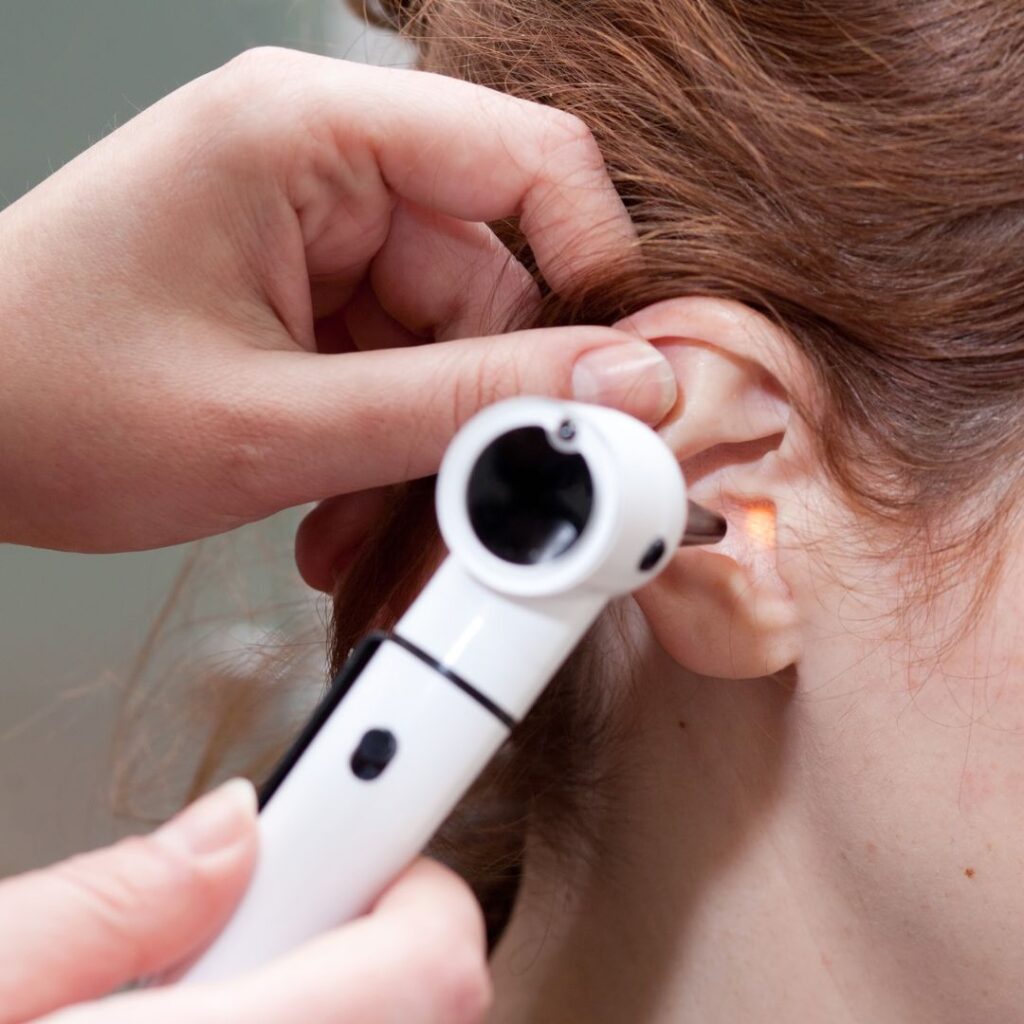

Introduction
People of all ages can be affected by hearing loss, which is a common condition that impairs their ability to interact with others and communicate. Conductive hearing loss is one of the different kinds of hearing loss that results from problems with the conductive system of the ear, which prevents sound from traveling from the outer to the inner ear. Let’s examine the causes, symptoms, and available treatments of conductive hearing loss.

What is Conductive Hearing Loss?
A form of hearing loss known as “conductive hearing loss” is brought on by problems in the middle or outer ear that prevent sound waves from reaching the inner ear. Many conditions, including earwax accumulation, infections, fluid buildup, or structural anomalies in the middle ear or ear canal, can cause this obstruction. Conductive hearing loss usually affects volume rather than clarity of sounds, in contrast to sensorineural hearing loss, which is caused by damage to the inner ear or auditory nerve.
Causes of Conductive Hearing Loss
Several factors can contribute to conductive hearing loss, including:
- Blockage in the Ear Canal: Accumulation of earwax, foreign objects, or fluid buildup due to infections can obstruct the ear canal, preventing sound from reaching the eardrum.
- Damage to the Middle Ear Structures: Injuries, infections such as otitis media (middle ear infection), or abnormalities in the middle ear bones (ossicles) can disrupt the transmission of sound vibrations.
- Malformation of the Outer or Middle Ear: Structural abnormalities present at birth or acquired later in life can interfere with normal sound conduction.
Symptoms of Conductive Hearing Loss
- Reduced Hearing Sensitivity: Difficulty hearing soft sounds or conversational speech, especially in noisy environments.
- Feeling of Fullness or Pressure in the Ear: Sensation of blockage or discomfort in the affected ear.
- Ear Pain or Discharge: Symptoms associated with underlying ear infections or trauma.
- Tinnitus: Ringing, buzzing, or humming noises in the affected ear, which may accompany conductive hearing loss.

Treatment Options
Treatment for conductive hearing loss depends on the underlying cause and severity of the condition. Common interventions include:
- Earwax Removal: If earwax buildup is the culprit, gentle cleaning by a healthcare professional can restore normal hearing.
- Medication: Antibiotics or antifungal medications may be prescribed to treat ear infections.
- Surgery: In cases of structural abnormalities or chronic conditions like otosclerosis, surgical procedures such as tympanoplasty (eardrum repair) or stapedectomy (middle ear bone surgery) may be recommended.
- Hearing Aids: For individuals with persistent or irreversible conductive hearing loss, hearing aids can amplify sound and improve auditory function.

- Earwax Removal: If earwax buildup is the culprit, gentle cleaning by a healthcare professional can restore normal hearing.
- Medication: Antibiotics or antifungal medications may be prescribed to treat ear infections.
- Surgery: In cases of structural abnormalities or chronic conditions like otosclerosis, surgical procedures such as tympanoplasty (eardrum repair) or stapedectomy may be recommended.
- Hearing Aids: For individuals with persistent or irreversible conductive hearing loss, hearing aids can amplify sound and improve auditory function.
Conclusion
If left untreated, conductive hearing loss can seriously impair quality of life and communication. To reduce the severity of this illness, early identification, precise diagnosis, and suitable treatment are essential. For specialized care and assistance, it is imperative that you or someone you know who is exhibiting signs of hearing loss seek an early medical evaluation from an otolaryngologist (a specialist in the ears, nose, and throat) or audiologist. By being aware of conductive hearing loss and how to manage it, we can make efforts to guarantee that people who have trouble hearing get the support and care they require to live fulfilling lives.